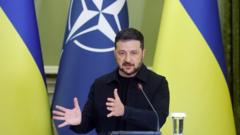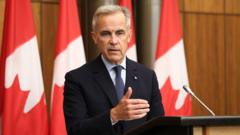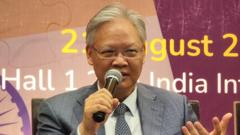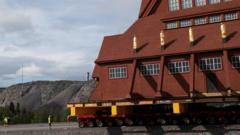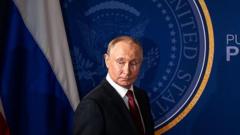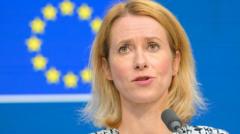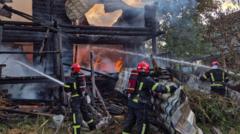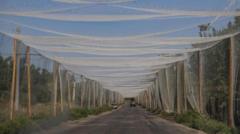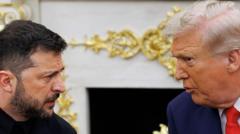In a recent meeting between President Trump and Ukrainian President Zelensky, a large map displayed in the Oval Office—illustrating areas of Ukraine under Russian control—marked a significant influence on their discussions, focusing on territorial perceptions and potential compromises regarding the ongoing war.
Trump’s Perception of Ukraine War Shaped by Oval Office Map
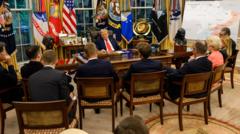
Trump’s Perception of Ukraine War Shaped by Oval Office Map
A map depicting Russian-occupied territories in Ukraine played a pivotal role in President Trump's discussions with Ukrainian leader Zelensky, influencing views on territorial compromise amidst the ongoing conflict.
The map in the Oval Office, showcasing regions of Ukraine marked in red as Russian-occupied, has become a focal point in President Donald Trump's interactions with Ukraine's Volodymyr Zelensky during their recent talks. Highlighting the stark reality that Russia controls approximately a fifth of Ukrainian land, Trump remarked, “A big chunk of territory is taken and that territory has been taken,” emphasizing a viewpoint that could advocate for potential territorial compromises in negotiations with Russia.
Zelensky, armed with his own map during the meeting, stated he had been “fighting with what is on that map,” stressing the importance of the tangible reality of territorial control rather than speculative claims. He felt optimistic about clarifying misconceptions about the conflict's geography, although there remained a significant disparity between his and Trump's perspectives.
Addressing European leaders, Trump articulated that Russian forces were "so clearly much more powerful," signalling an uncertain situation for Ukrainian autonomy. According to Trump, discussions surrounding the Donbas region, currently under substantial Russian control, illustrated the ongoing tactical challenges. Before the conflict erupted in 2014, the resource-rich Donbas contributed about 16% to Ukraine's GDP, making its loss particularly poignant.
As the conversation turned to the percentages of various Ukrainian regions under Russian control—initially reported as ranging from 99% in Luhansk to mere single digits in Sumy—Zelensky stressed the need for exactitude in this data, asserting that the Ukrainian map presented during the talks annotated a mere 1% occupation over recent days, a figure backed by further analysis from Ukraine's DeepState mapping group.
Despite notable territorial advances by Russian forces in recent months, military analysts suggest that thorough seizures of lost territory would likely take multiple years. Reports from the Institute of War echoed these sentiments, affirming that account discrepancies may arise from differing methodologies in assessing territorial occupation.
While discussions unfolded, Zelensky noted that despite obstacles, Ukraine remains steadfast in defending its territory, with a large civilian population still residing in contested regions like Donetsk. This determination to reclaim lost ground was underscored by Zelensky’s compliment to Trump regarding the map, stating, “Thank you for the map, by the way, it was great; I’m thinking how to take it back.”
As both leaders navigated their distinct perspectives on the ongoing war, the reliance on visual representations of territory brought forth the stark realities and challenges that lie ahead for Ukraine amidst negotiations for peace. The differing interpretations of the front lines underscore the ongoing complexities in determining the future of Ukraine's sovereignty.

